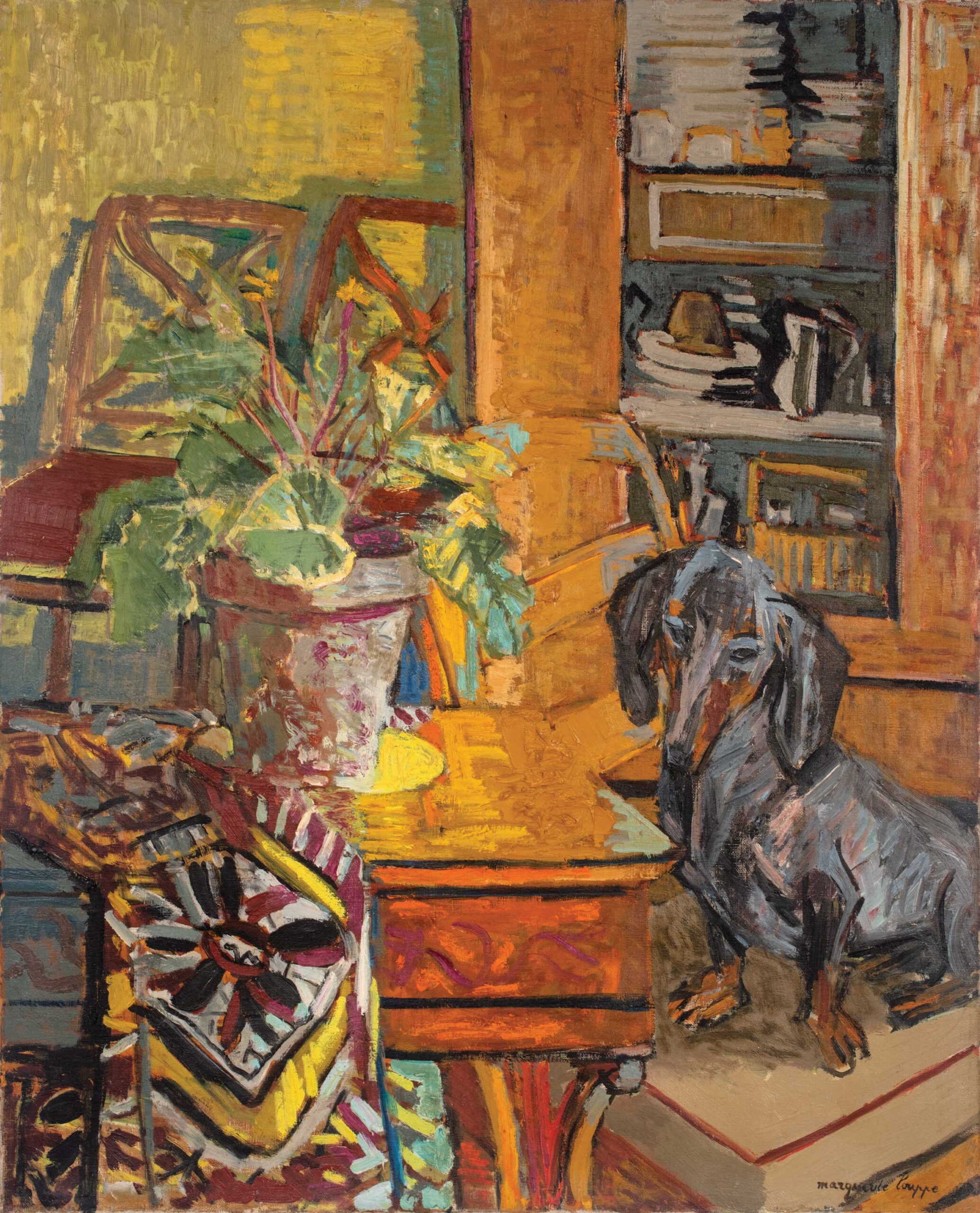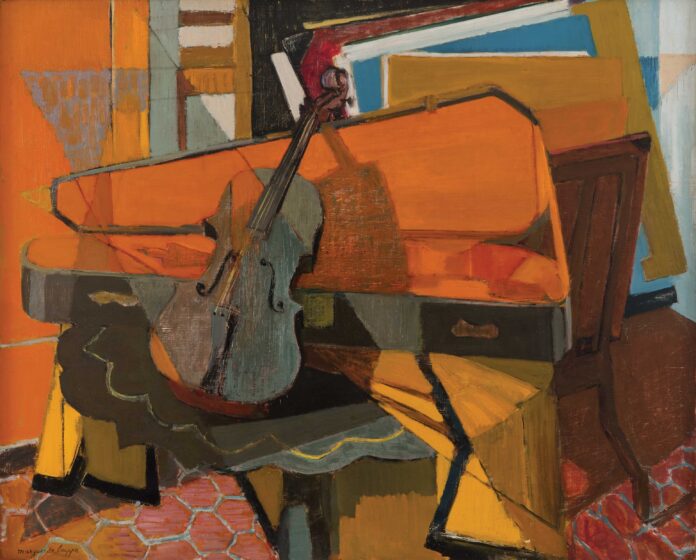Alas, Marguerite Louppe did not date her works, although she signed them with a confident flourish in a distinctive lowercase imprint. Continue reading…
Marguerite Louppe: On Her Own
by Lilly Wei
Women artists of talent have too often been overlooked. This is something not yet banished to the past, although, yes, times have changed, and for the better. A gratifying number of women — still not enough — have emerged from undeserved obscurity, some once eclipsed by a more successful husband, lover, or son. A now-famous example is Suzanne Valadon, whose son was Maurice Utrillo. Marguerite Louppe (1902–1988) is another: her life spanned almost the entire 20th century, a period of enormous transitions of unparalleled rapidity.
Louppe’s husband was Maurice Brianchon (1899–1979), an artist celebrated in his day both in France and abroad. She was his active collaborator on many projects and managed his career. He, in turn, was surprisingly supportive of her as an artist in her own right, unusual in the context of the times and within a traditionally patriarchal society. By all accounts, they had an exceptionally close relationship that seamlessly merged the professional and the personal. (Even Christo and Jeanne-Claude, one of history’s most famous art couples — and from a later, more progressive generation — did not officially become a collective until 1994, three decades after they began to collaborate.)
Louppe was born in Commercy, in northeastern France, to a family of prominent engineers that included her father and an uncle, Albert Louppe, who guided construction of a strategically important bridge near Brest that was later named in his honor. Her parents moved to Paris soon after she was born and settled in the wealthy 16th arrondissement, where she was raised.

Rather than enrolling her in a Catholic school, her parents sent her to the Lycée Molière. This was the first French public school to accept girls; its rigor and high standards, as well as its more diverse student body, suited Louppe and served her well later. There she studied literature, turning to art after graduation by taking classes for the next six years at several of the private art academies that abounded in Paris: the Julian, Grande Chaumière, Scandinave, and André Lhote.
These academies were quite progressive; both men and women (who were not yet accepted at more established art schools) flocked to them. The Académie Julian was noted for its radicalism and encouragement of independent thinking, which no doubt reinforced Louppe’s experimental inclinations and interest in the new. Among the fledgling artists there with her were Marcel Duchamp, Jean Dubuffet, and Louise Bourgeois. Julian’s older alumni included Pierre Bonnard, André Derain, and Édouard Vuillard. Louppe met Brianchon at a Julian function through the family of a friend; they married in 1934 and the following year their only child, Pierre-Antoine, was born.
Louppe mounted her last show in 1985 and died three years later in Paris, a decade after her husband. For many years their artworks were stored in a warehouse by their son, largely unseen, although now and then he sold some of his father’s paintings. Pierre-Antoine died in 2012, and, since he never married, he bequeathed his parents’ estate to relatives with whom he was close. Their son, David Hirsh, began to make inquiries in consultation with William Corwin, an artist and art historian. Now their estate is represented by Rosenberg & Co., the powerhouse gallery of modern art established in Paris more than a century ago and forced to relocate to New York during the Nazi occupation. Thanks to its efforts and those of others, Louppe’s oeuvre is enjoying its moment in the sun, the focus of a string of exhibitions and overdue critical attention.

Separate & Together
Louppe and Brianchon seem to have had an ideal marriage, if any relationship can be completely free from complications. She frequently exhibited where he did, no doubt at his urging, but that would have gotten her only so far without her considerable skills, even if they were not recognized as equal to his. At the time very few women artists were appreciated by critics, institutional power brokers, or the public, even when, like Louppe, they were showing at highly regarded galleries such as Charpentier, Charles Auguste Girard, and René Drouet, alongside artists like Bonnard, Georges Rouault, Georges Braque, and Maurice Denis.
Among the couple’s documented collaborations were three murals for Paris’s Conservatoire National de Musique et d’Art Dramatique, of which later renovations have left no trace. Louppe also made illustrations for a novel by Georges Duhamel, the celebrated critic, Nobel nominee, and member of the Académie Française — another indication that she was respected by others beyond her husband.
Louppe and Brianchon enjoyed a full social life and hosted salons for cultural luminaries — a power couple, we might say. But in 1959, after decades at the center of the Paris art world, they bought a property with a commodious farmhouse and garden in Truffières, a village in the Dordogne region of southwestern France. It simplified their life and gave them more time and space to devote to their work, something many artists long for at a certain point in their careers. Louppe got her own studio for the first time and no longer needed to juggle her workspace time with Brianchon’s. She doubled down on studio paintings of still lifes, their house and garden, and the village, all filtered through her idiosyncratically diagrammed compositions.
Alas, Louppe did not date her works, although she signed them with a confident flourish in a distinctive lowercase imprint. Because of this, painstaking research has been necessary to establish a tentative chronology for her output. The timeline that has emerged is often based on stylistic evidence as well as content (e.g., was it painted in Paris or Truffières?), and linked to dated photographs and other archival documents. Even basic facts about Louppe are not always easily confirmed. Since there were no diaries and little correspondence between her and Brianchon, much of their relationship is based on the gathering of related data, from which an idea of their life together can be sketched.
Continue reading this article in Fine Art Connoisseur magazine (November / December 2022 issue)








